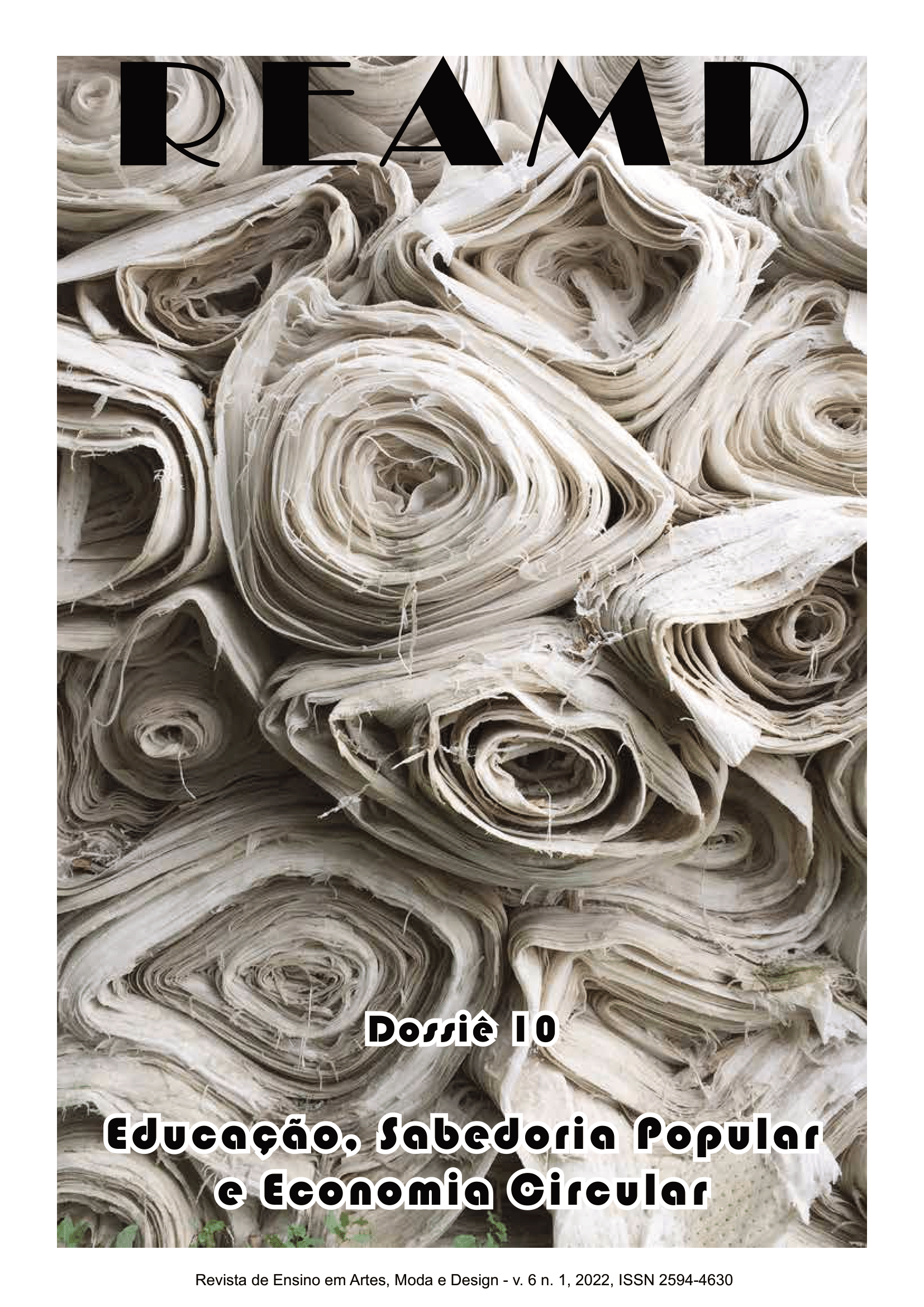Discourses about no gender fashion in Vogue Brazil
DOI:
https://doi.org/10.5965/25944630612022e0144Keywords:
No gender fashion, Vogue Brazil, Discourse analysisAbstract
The article seeks to investigate, by means of the French line discourse analysis method, how the discursive approach about no gender fashion is made in the magazine Vogue Brasil, considering, for this purpose, the editions aired in the period from January to June 2020, in which there are five approaches to the subject, divided into three subjects and two editorials. It is worth noting that Vogue Brasil is today the only print title specialized in fashion in Brazil to circulate monthly. Stands out in the production of articles, columns and editorials on the national and international fashion scene and is associated with hegemonic and dominant discursive structures of fashion, following the speeches themselves headed by major brands, among them, that of the no gender fashion, that has been attracting the attention of creators since 2015. In spite of the coverage of the event being present in the pages of Vogue Brasil we see, thus, that the publication does not depart from a pattern of fashion coverage that accompanies it since its origin in Brazil and that may be related to the maintenance of a status quo that legitimizes power relations still dominant in the relationship between gender and clothing in the fashion scene national.
Downloads
References
BRANDÃO, Helena H. Nagamine. Introdução à análise do discurso. Campinas: Unicamp, 2012
BRANDÃO, Ignácio de Loyolla. Vogue: Bom Gosto e sofisticação. In Cadernos da Comunicação – Mulheres em Revista: O Jornalismo Feminino no Brasil. Rio de Janeiro: Secretaria Especial de Comunicação, 2002.
BARNARD, Malcom. Moda e Comunicação. Rio de Janeiro: Rocco, 2003
CRANE, Diana. A moda e seu papel social. São Paulo: Senac, 2006.
FOUCAULT, Michael. A Arqueologia do Saber. Rio de Janeiro: Forense Universitária, 1986.
GOMES, Mayra. As materialidades e seus discursos. Revista Comunicação, Mídia e Consumo. V. 16, N. 46, P. 271-290. São Paulo: ESPM, 2019.
HOLLANDER, Anne. O sexo e as roupas. Rio de Janeiro: Rocco, 1996.
JOFFILY, Ruth. O Jornalismo e Produção de Moda. Rio de Janeiro: Nova Fronteira, 1991.
MAINGUENEAU, Dominique. Novas tendências em análise do discurso. Campinas: Pontes, 1997.
MAINGUENEAU, Dominique. Gênese dos Discursos; São Paulo: Parábola Editorial, 2008.
MARQUES, Ângela Cristina Salgueiro. Comunicação, estética e política: a partilha do sensível promovida pelo dissenso, pela resistência e pela comunidade. Revista Galáxia. nº 22, p.25-39. São Paulo: PUC-SP, 2011.
MEDINA, Cremilda. Notícia: um produto à venda. São Paulo: Summus. 1988.
MELLO E SOUZA, Gilda. O Espírito das Roupas. São Paulo: Companhia das Letras, 2005.
RANCIÈRE, Jacques. O espectador emancipado. São Paulo: 34, 2012.
SCHMITT, Juliana. Santos; Gabriel. Moda sem gênero: conceituação e contextualização das tendências não binárias. In: Anais do 12 Colóquio de Moda. João Pessoa: 2016.
Fontes:
Revista Vogue. Nem eles, nem elas. n 498, p. 46. São Paulo: Condé Nast.
Revista Vogue. Uma coisa só. n 499, p.61-62. São Paulo: Condé Nast.
Revista Vogue. Paixão visceral. n 499, p.94. São Paulo: Condé Nast.
Downloads
Published
How to Cite
Issue
Section
License
Copyright (c) 2022 Carina Rufino

This work is licensed under a Creative Commons Attribution 4.0 International License.
- Authors retain copyright and grant the journal the right of first publication, with work simultaneously licensed under the Creative Commons Attribution 4.0 International License, which allows for:
1. Share — copy and redistribute the material in any medium or format for any purpose, even commercially.
2. Adapt — remix, transform, and build upon the material for any purpose, even commercially.
The licensor cannot revoke these freedoms as long as you follow the license terms.Under the following terms:
1. Attribution — You must give appropriate credit, provide a link to the license, and indicate if changes were made. You may do so in any reasonable manner, but not in any way that suggests the licensor endorses you or your use.
2. No additional restrictions — You may not apply legal terms or technological measures that legally restrict others from doing anything the license permits. -
Plagiarism, in all its forms, constitutes unethical publication behavior and is unacceptable. This magazine uses iThenticate similarity control software.






